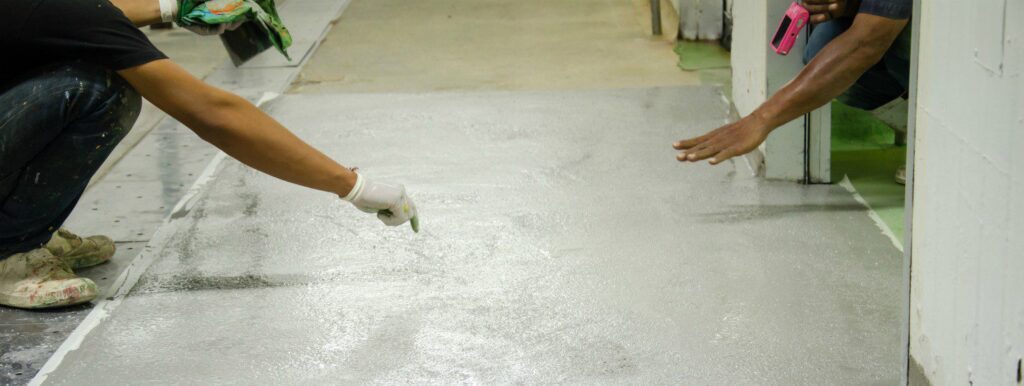The Calcium Chloride Moisture Test (ASTM F1869) has been a widely used method for measuring moisture vapor emission rates (MVER) from concrete for many years, although it has somewhat taken a backseat to the in-situ relative humidity (RH) test (ASTM F2170) in recent times. Nevertheless, it is still in common use, and many flooring and construction professionals encounter it regularly. However, it’s important to understand the limitations and challenges associated with this test.
The Calcium Chloride Moisture Test involves placing a dish of anhydrous calcium chloride (CaCl2) on a concrete surface and measuring the weight gain of the CaCl2 over a specific time period, usually between 60-72 hours. This weight gain is then used to calculate the quantity of moisture in pounds emitting from 1,000 square feet of concrete over a 24-hour period, expressed as the MVER. While this test has been utilized for decades, several factors raise questions about its quantitative accuracy and reliability in assessing concrete moisture levels
- Mix Design and Water of Convenience: Concrete mix designs typically include water of necessity (required for hydration) and water of convenience (added to improve workability). Only a portion of the water of convenience remains in the concrete after placement due to evaporation. The ASTM F1869 test does not accurately measure the rate at which water of convenience leaves the concrete.
- Influence of Environmental Conditions: The Calcium Chloride Moisture Test is highly sensitive to environmental conditions both above and below the concrete slab. It requires testing within an air temperature range of 65-85 degrees Fahrenheit and a relative humidity range of 40% to 60%. Variations in these conditions can lead to significant variations in test results, potentially ranging plus or minus 30%. Furthermore, the temperature at the bottom of the concrete slab (below-slab temperature) also impacts test results, with higher temperatures yielding higher MVER results.
- Lack of Consideration for Other Variables: Factors such as concrete porosity, the effectiveness of the seal around the test dome, and moisture migration from other sources can influence test results but are often not taken into account.
- Inherent Variability: The Calcium Chloride Moisture Test inherently has a degree of variability, making it less reliable for precise moisture measurement. Test results can fluctuate even when conducted under similar conditions.
- Need for Precise Environmental Control: To obtain meaningful results from this test, precise control of ambient concrete, soil temperatures, and relative humidity is required. Deviations from these specific conditions can render the test data irrelevant for assessing MVER from a concrete slab.
Given these limitations and the significant influence of environmental conditions on the test results, it is advisable not to rely solely on the Calcium Chloride Moisture Test as a definitive predictor of concrete moisture levels. Instead, it is recommended to consider moisture mitigation products or flooring systems designed for high-moisture environments when dealing with concrete surfaces that may have moisture issues. Additionally, the in-situ RH test (ASTM F2170) is often favored for its ability to provide more accurate and reliable moisture measurements from within the concrete slab.
Attribution: This content is based on information from ProInstaller Magazine.



